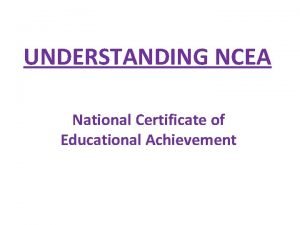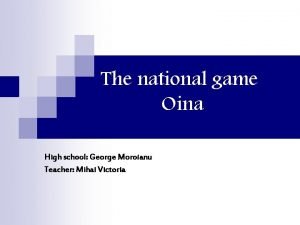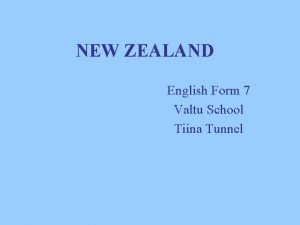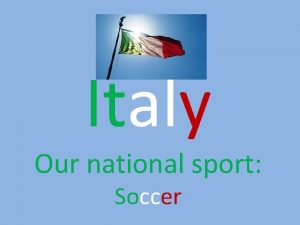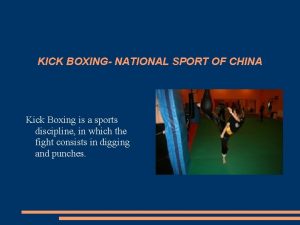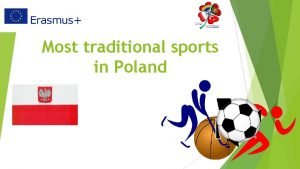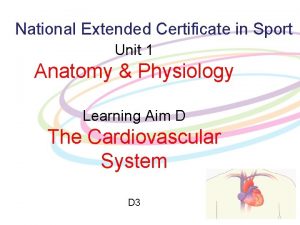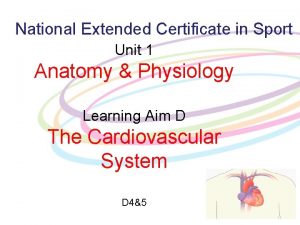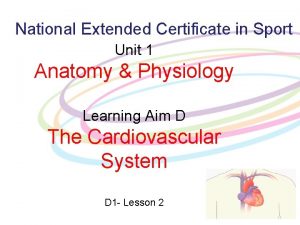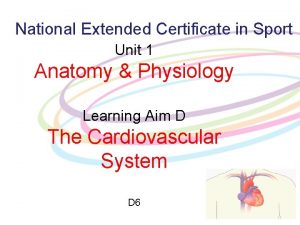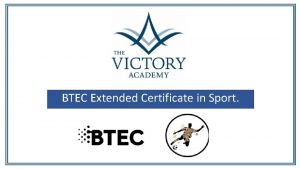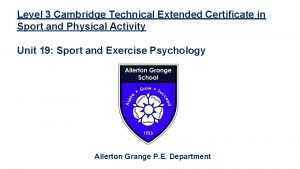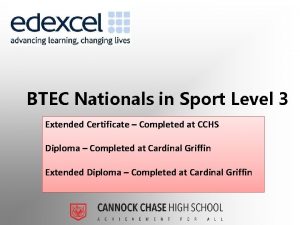National Extended Certificate in Sport Unit 1 Anatomy









- Slides: 9

National Extended Certificate in Sport Unit 1 Anatomy & Physiology Learning Aim D The Cardiovascular System D 2

Last lesson we… ü Explored the components of blood. ü Described the function of each type of blood vessel.

What is the role of the cardiovascular system?

Jigsaw Learning Task In your teams, you will be given one of the functions to research. You must present your function in detail and be prepared to answer any questions from the rest of the class. 1) Delivery and removal of nutrients and waste 2) Thermoregulation (vasoconstriction and vasodilation) 3) Fighting infection 4) Clotting blood

1) Delivery and removal of nutrients and waste • The key function of the CV system is to supply oxygen and nutrients to the body tissues via the bloodstream. • During exercise, more of these are needed so the CV system responds to the increased demands. Failure to do this will result in reduced performance. • The CV system also removes waste products from the tissues to the kidneys and liver. If this removal does not happen, a build up of lactate will cause soreness and fatigue.

2) Themoregulation • The CV system is responsible for maintaining thermal balance during exercise so that you do not overheat. • VASODILATION: During exercise, vasodilation happens in vessels where gaseous exchange takes place. This means the diameter of the vessel is increased. This reduces resistance of blood and therefore decreases temperature. • VASOCONSTRICTION: Blood vessels can temporarily shut down or limit blood flow to tissues. This is done by reducing the diameter of vessels. This causes

3) Fighting Infection • White blood cells are constantly produced inside the bone marrow. • They are stored inside the blood and are transported around the body. • They consume and kill pathogens (substances that cause illness). • They also produce antibodies which kill pathogens and produce antitoxins which neutralise any toxins that may have been released by the pathogens.

4) Clotting Blood • The clotting of blood is a complex process wherein white blood cells form solid clots. • A damaged blood vessel wall is covered by a fibrin clot to repair the damage. Platelets will form a plug at the site of damage, whilst plasma components form fibrin strands to strengthen the platelet plug. • This process is made possible by the constant supply of blood.

Exam Style Question 1) Describe how vasodilation and vasoconstriction assist in thermoregulation of the body (6 marks).



